
There has been a lot of discussion with respect to the Texas electricity grid this year, particularly since Winter Storm Uri hit the state in February 2021. Regulators, utility executives, and customer advocacy groups are reviewing and assessing the reasons for widespread blackouts in the Electric Reliability Council of Texas (ERCOT), the state’s principal electricity grid, and considering how to prevent an energy shortage from happening in the future. These investigations will ultimately uncover why power plants failed and how to better prepare them and the overall system for the next incident.
Beyond uncovering reasons for plant failures, this event has sparked discussion about the generation mix of Texas (and other grids) as many jurisdictions seek to shift to lower CO2-emitting resources. Some experts suggest that the events in Texas may be the strongest case yet for renewable energy (see this article as an example). This position made us consider a key question:
How would a different generation mix have performed in ERCOT?
The focus is not on why plants performed the way they did, but instead, given what we know about how they did perform, would a different mix of generation sources have done any better at meeting the demand? If so, at what cost and emissions profile? To answer this question, we built an interactive model to determine how the ERCOT grid would have performed with a different generation mix. If you have ever wondered what Texas could have looked like as a carbon-neutral state, now is your chance to build it. We encourage you to consider these key questions when interacting with this tool:
The focus is not on why power plants performed the way they did, but instead, given what we know about how they did perform, would a different mix of power generation sources have done any better at meeting the demand? If so, at what cost and emissions profile? To answer this question, we built an interactive model to determine how the ERCOT grid would have performed with a different electricity generation mix. If you have ever wondered what Texas could have looked like as a carbon-neutral state, now is your chance to build it. We encourage you to consider these key questions when interacting with this tool:
Our interactive model allows for the adjustment of energy generation resources to see if that proxy generation portfolio could have reduced emissions while still meeting the state’s actual electricity demand over the study period (January 2020 through April 2021).
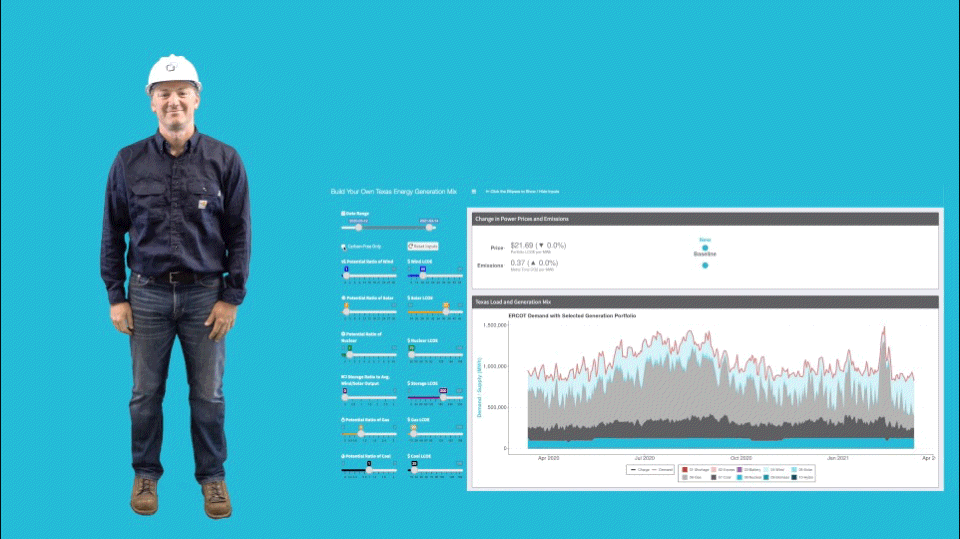
In building the model, we reviewed daily actual electricity output and capacity factors by generation type for the period leading up to and including Winter Storm Uri. Total daily generation can be used as a reasonable proxy for the measure of demand (i.e., the system produced the power to meet demand, ignoring any imports or exports). By varying the total capacity of each generation source and applying the known capacity factor from that day, the model calculates what resource category or type would have been used. Surplus energy to the daily demand is noted in light red, while any energy deficit is shown in bold red. Using average resource costs for each generation type, the model estimates the impacts on the cost of energy.
As a first step, a baseline scenario was developed using the following assumptions:
[1] Because this analysis is a thought exercise regarding the ERCOT generation mix, the model requires building all-new generation sources.
In developing the baseline scenario, it becomes apparent, that there are a few times throughout the study period where meeting demand without fossil fuels would have proven difficult. There are two instances of particularly high demand at a time when renewable output was low for extended periods: September 2020 and February 2021.
The February 2021 Winter Storm Uri (February 13-17) is obviously the most well-known instance.
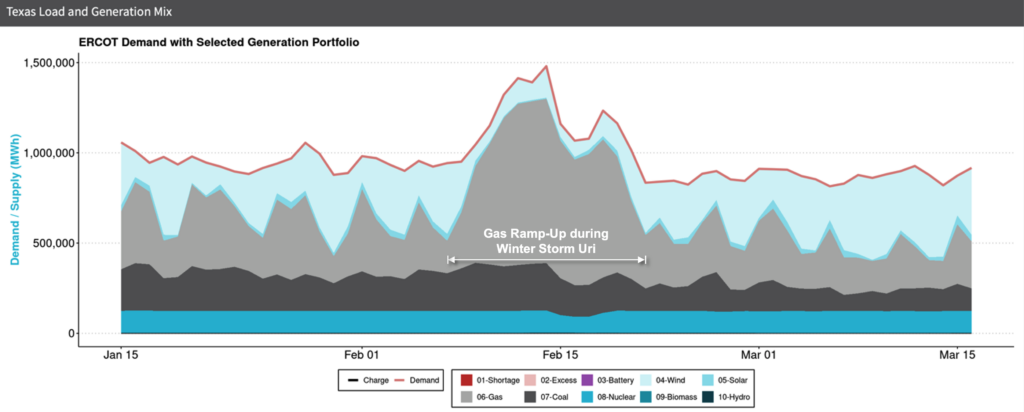
The second such period, and less well known, was in September 2020 when renewable energy production was low for several days, while high temperatures led to demand increases that required a ramp-up of natural gas generation.
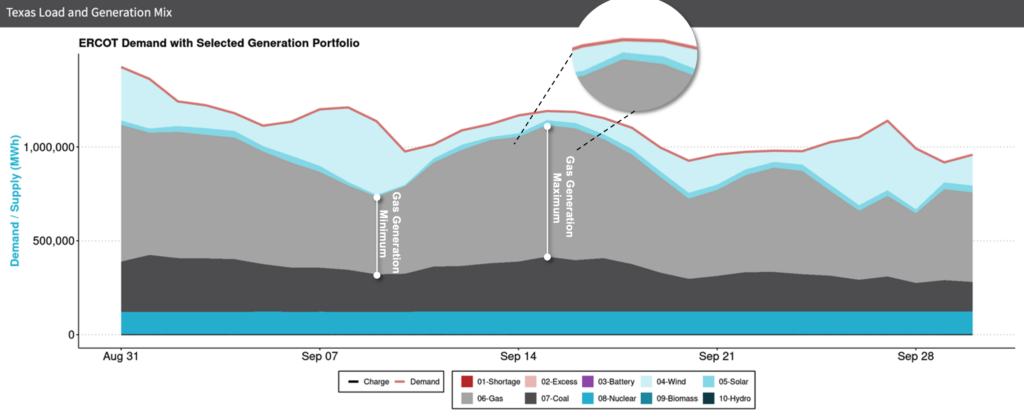
Specifically, a drop in wind generation (from 35% capacity factor on September 9, 2020, to 4% on September 15, 2020) resulted in significant under-production of zero-carbon resources, and natural gas generation was called upon to meet demand and maintain system reliability.
Furthermore, demand response efforts were present during these two events, so actual demand was likely higher than what is reflected at those times.
Conversely, there are times over the study period where renewables comprised a significant portion of the generation mix and any major increase above current capacity would have created “overproduction.” See examples from December 17, 2020, to January 4, 2021, below.
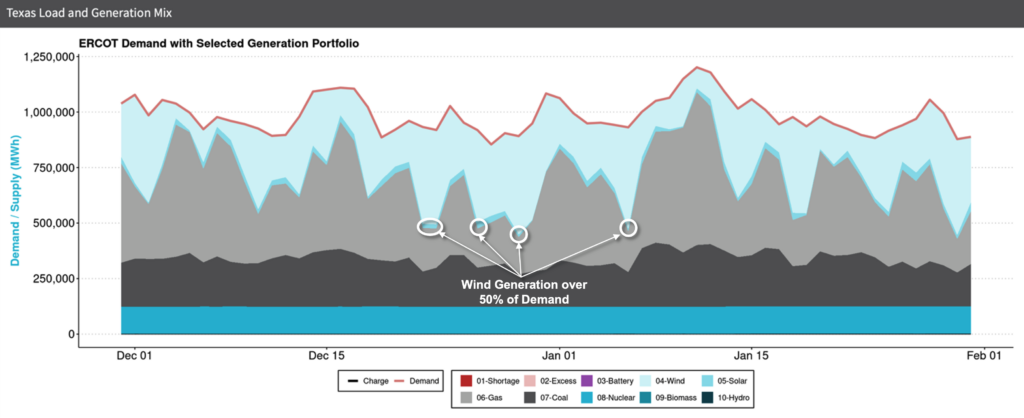
Using the model, we ran an “increased renewable, no storage” scenario to see how building an alternative electricity generation mix would have performed over the study period. In this scenario, we increased wind and solar capacity by more than four times the current capacity and kept the existing nuclear power plants and hydro sites at their current operating capacity. We removed natural gas and coal-fired resources from the energy generation mix and did not consider storage alternatives.
This “increased renewable, no storage” scenario demonstrates that building exclusively intermittent resources to meet high-demand periods, like Winter Storm Uri, will result in excess energy many times throughout the study period when demand is low. There are additional scenarios that can be created in the model where excess energy is created during the study period. This excess energy can be created by generation resources whose operating characteristics are limited in their ability to ramp with demand.

As a result of various model iterations (i.e., changing assumptions and reviewing results), we identified the following questions, which will be explored in future episodes.
We encourage you to interact with this model and test how your potential generation mix would have impacted carbon emissions and the cost of energy. As you interact with this tool, there will be a significant number of questions that arise from this “what-if” analysis.
Please contact us to discuss our perspective on the questions that our clients are asking, our perspective on addressing these questions, and any potential implications of various solutions that arise from these different “what-if” scenarios.


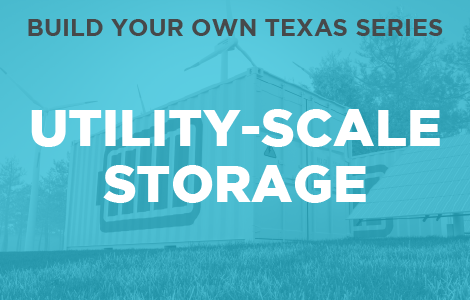

Additional Contributing Authors: Bill Hosken, Cory O’Brien, Morgan Schadegg, and Chris Vlahoplus.
View MoreSussex Economic Advisors is now part of ScottMadden. We invite you to learn more about our expanded firm. Please use the Contact Us form to request additional information.